 |
Loadin
|
 |
 |
Loadin
|
 |
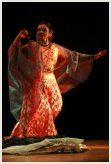 |
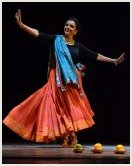 |
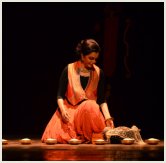 |
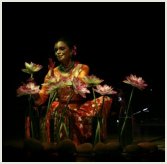 |
 |
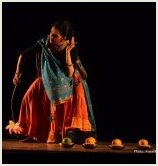 |
|
Home
| Synopsis
| Credits
| Calendar of Performances | Critics Speak | Response | Photo Gallery
a million SITA-s - Response a Neo Bharatam presentation Response - students' feedback to the performance on May 3, 2015 at the NYU Steinhardt School, Greenwich Village Storytelling in the Classroom, Spring 2015 - Paige Horton I was very pleased to have been able to make it to Anita Ratnam’s performance this weekend. I was very eager to see the blending of story and dance, particularly as I know many classical Indian dances are based in story. While I am somewhat familiar with Indian dance, I do not have much experience with Indian stories. However, after hearing Anita, I realized that I have heard pieces of Sita and Rama’s stories in other contexts (usually focused on Rama, as Anita pointed out). In particular, the characters make an appearance in a story in the 1990’s movie version of A Little Princess, which was a staple of my adolescence (I’m ashamed to say I do not know if this is part of the book, as I have never read it, but it would make sense that it is India plays an important role in The Secret Garden as well). I found it interesting to see how Anita opened her story with an informal conversation about the character Sita, and her place in the Indian folk canon. She came back to this informal voice several times, which I found both informative and distracting, which I will come back to. Anita’s presence on the stage is powerful and captivating, and I appreciated her costume and set. I wish that I could see the full show she normally puts on, because I believe that it what she did at Provincetown was very ambitious in terms of production, and in some ways detracted from the telling of the story in that particular setting. As a performer, I am often hyper-aware of production elements which don’t necessarily bother other people. In this particular performance the complex costume changes took away from the flow and grace of the storytelling. I appreciated Anita’s need to differentiate the women in the story, because there were so many, and each was unique and important. Which seems to be a main issue with telling an epic: there are so many characters involved! I found myself enthralled with each woman, story and sad that it was so short. I was also struck with the huge cultural learning curve which hearing this story requires. I do not believe that you have to know the culture a story originates from in order to appreciate it (as we saw during our class), but in the case of an epic like the Ramayana there was a lot of literacy I felt distinctly lacking in. If I had grown up in India, hearing little bits and tags of stories about Rama and Sita, having their stories and lessons leak into all the pieces of my own personal history, I would understand them that much better. While I was pondering this I realized that I can use this paradox as a tool in the classroom to help students understand each other better. Just like a story, a person is complex, and if you are unfamiliar with their context then you may not really understand them. Especially in a classroom with students from many cultural backgrounds, it would be so interesting to have each student come in with an ‘epic’ that comes from their country. We can tell these stories and then see the questions that we all have about them. A student may never have considered that someone might not know why Rama was blue (really, why is he blue?), and in explaining this we can discuss how the story we tell on the outside is never the whole story…there’s always so much more to learn. I had mentioned Carmen Deedy and John McCutcheon in my last paper, and I think that one of the reasons I connect with them both as storytellers is that they tell personal stories. Personal stories are different from epics or folk tales because they are what is teaching us about a person, you don’t really have to know the person first. While listening to Anita tell her epic story, I wished in some ways that it had stayed centered on Sita, that she became Sita and told us ‘her’ story. Each time she stepped out of character to give us some useful information I kind of lost the emotional thread of he story. I loved the parts where I felt Anita become Sita, and the beauty of connecting Sita’s beginning of being found in a furrow with her ending of returning to the furrow was so powerful, that in a way, I didn’t really even need the stories in the middle…and I certainly didn’t need the men! Home | Contact |
About Arangham | About Anita Ratnam |
Events | Archive of events | Calendar of events
| On Tour | Press
|
Articles | Lectures | Publications | Active Repertoire | Festivals | Conferences | Rituals & Revivals | Workshops | Art & Activism |